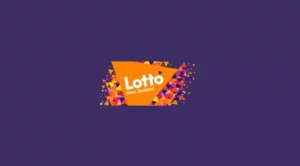 The Department of International Affairs (DIA) discovered that the lottery in New Zealand was granting its payouts based on an “incoherent” system that was showing a clear bias towards specific communities. While billions of dollars generated from the Lotto were going to more favoured sectors, minority groups like Māori and Pasifika were left neglected.
The Department of International Affairs (DIA) discovered that the lottery in New Zealand was granting its payouts based on an “incoherent” system that was showing a clear bias towards specific communities. While billions of dollars generated from the Lotto were going to more favoured sectors, minority groups like Māori and Pasifika were left neglected.
These revelations followed the first DIA review of the structure of the lottery grant system. The documents that were released during the inquiry showed that the majority of the lottery profits was used to fund bigger communities, while smaller ones were left out. After the first discoveries of the lottery review were published, Jan Tinetti, Minister of Internal Affairs, suggested that all ties between charity and gambling should be cut.
Lottery Review to Decide Beneficiaries of Major Portion of Lotto’s Profits
 While the biassed lottery grants system was revealed at the initial stages of the review, the next thing that will be revised will be the four statutory bodies, which are the main beneficiaries of 42% of Lotto’s profits. Currently, the four bodies that receive a huge portion of the funding include Sport NZ, Creative New Zealand, Ngā Taonga Sound and Visions, and the Film Commission. The review of the lottery grants will evaluate whether these statutory bodies should continue to be given 42% of the Lotto profits.
While the biassed lottery grants system was revealed at the initial stages of the review, the next thing that will be revised will be the four statutory bodies, which are the main beneficiaries of 42% of Lotto’s profits. Currently, the four bodies that receive a huge portion of the funding include Sport NZ, Creative New Zealand, Ngā Taonga Sound and Visions, and the Film Commission. The review of the lottery grants will evaluate whether these statutory bodies should continue to be given 42% of the Lotto profits.
According to Tinetti, the four organisations feel extremely uncomfortable receiving money that was generated through gambling. That said, when the four beneficiaries were informed about the lottery grant review, they expressed some concerns due to the extent of their dependency on this type of funding.
Just last year, about 72% of Creative New Zealand’s funding came from the lottery. Meanwhile, the Lotto profits contributed 40% of Sport NZ’s funding, while the contribution rate for Film Commission and Ngā Taonga was 32% and 16% respectively.
While the four bodies had received 42% of Lotto’s profits throughout the years since 1991, the remaining 58% were allocated to 21 specialist and regional committees. The said grant system that determined the distribution of the money was described as “inflexible funding approaches that hinder innovation”.
Lotto Profits Unevenly Distributed Through Sectors, Sports and Arts Received Better Funding
 The review showed that fields like sports and arts were the bigger beneficiaries of Lotto’s profits. Meanwhile, the research sector received merely 1.7% of the lottery profits and the specialist committee for the environment and animal welfare received the small benefit of only 1.2% of the money.
The review showed that fields like sports and arts were the bigger beneficiaries of Lotto’s profits. Meanwhile, the research sector received merely 1.7% of the lottery profits and the specialist committee for the environment and animal welfare received the small benefit of only 1.2% of the money.
While Lotto is promoting the idea of 100% of its profits going back to the community, many gambling experts believe this statement is somewhat deceptive. Merely 25% of each dollar that is spent on Lotto is returned to the community, with the rest of the money being spent for prizes, taxes, retail commissions, and other spending related to Lotto’s operations. When asked about the misleading message, chief executive Chris Lyman acknowledged that it would be more accurate to say that 25% of Lotto’s profit goes back to the community but that was not the message the company settled on.
- Author


